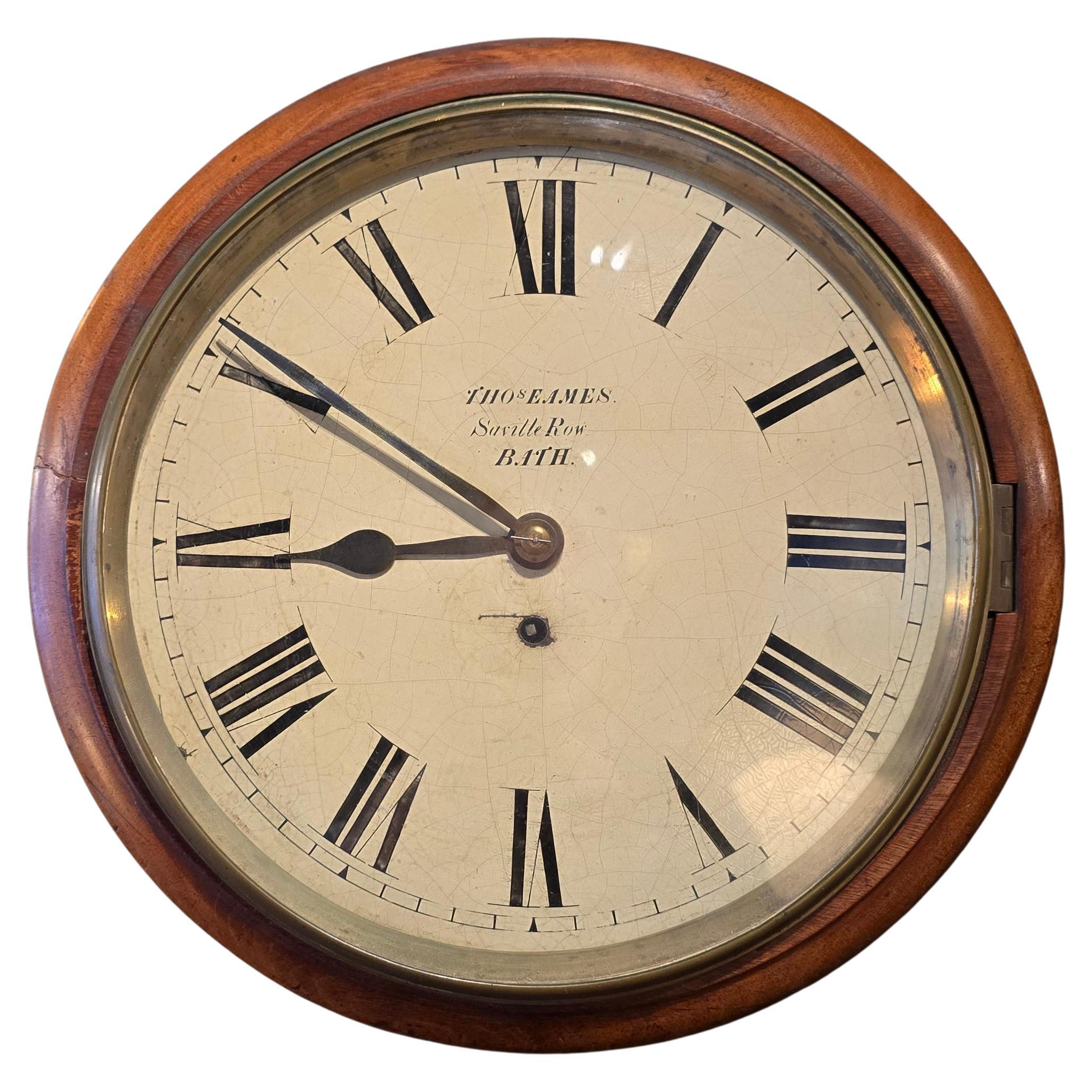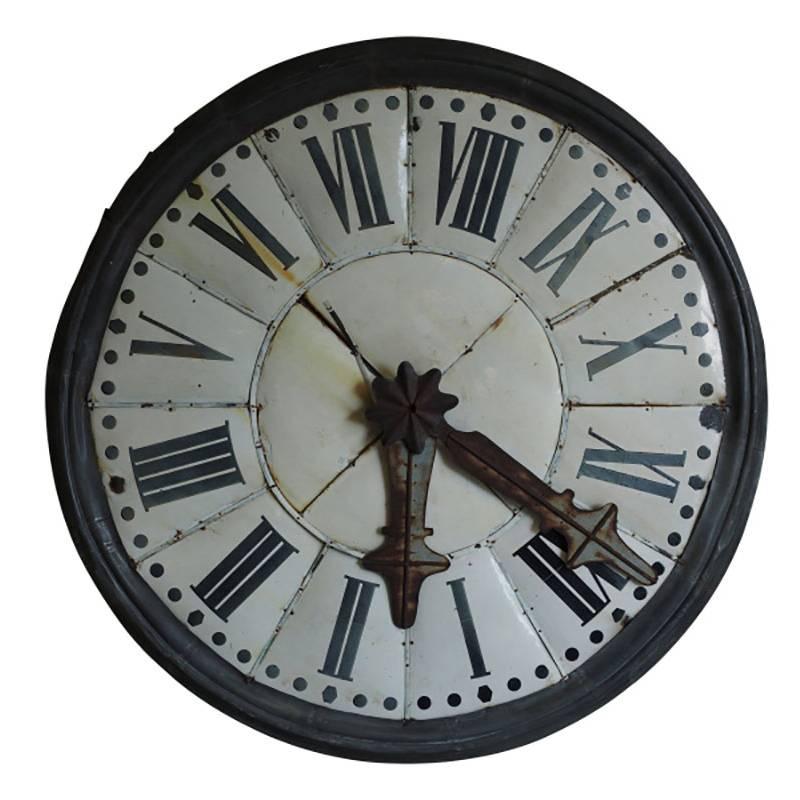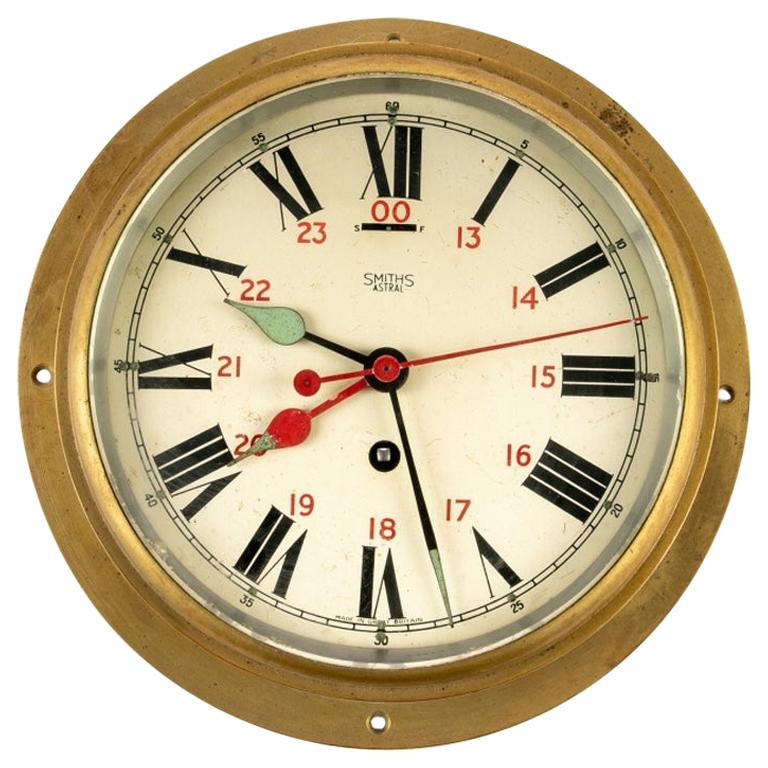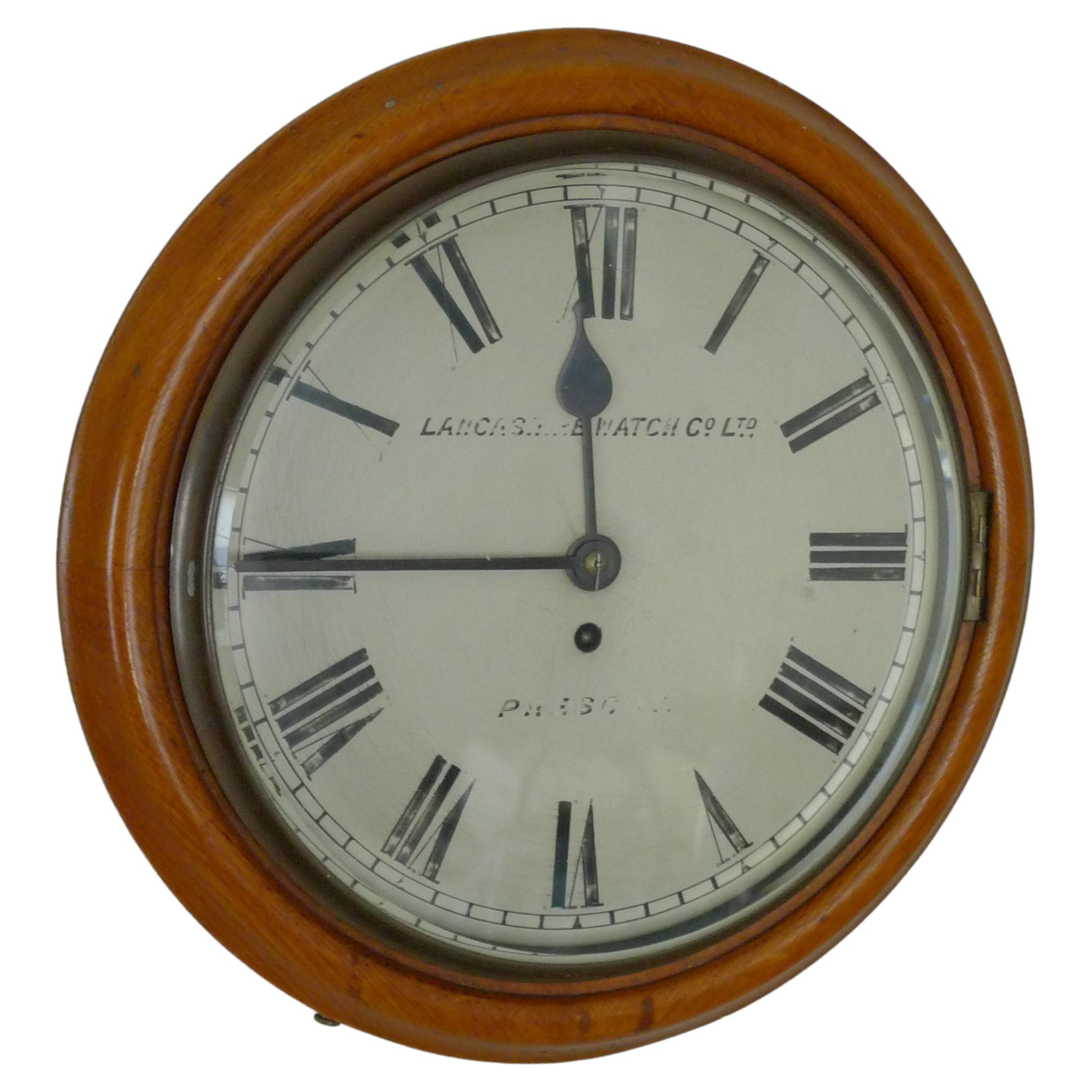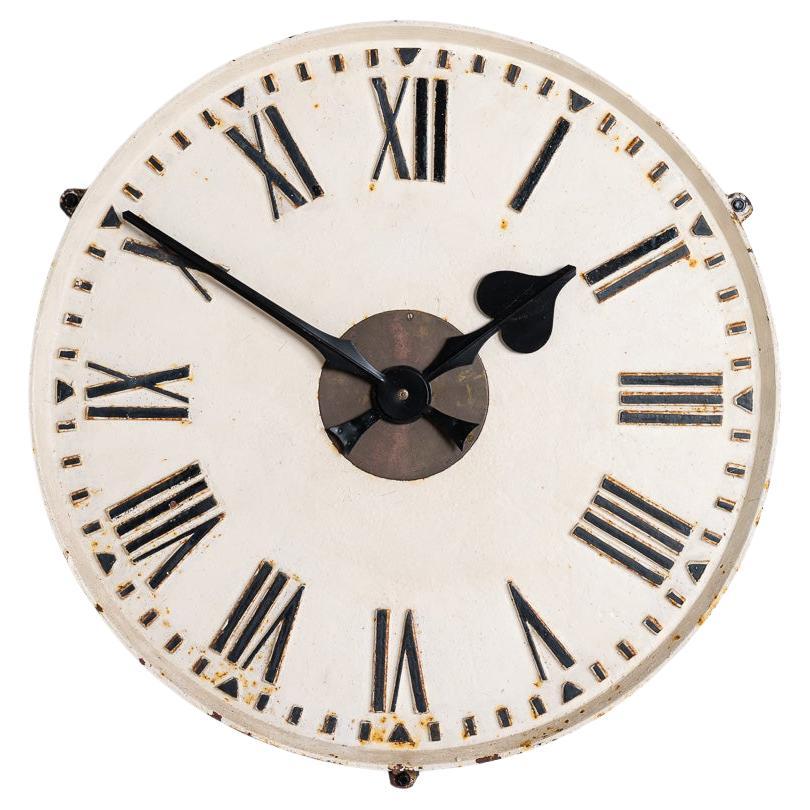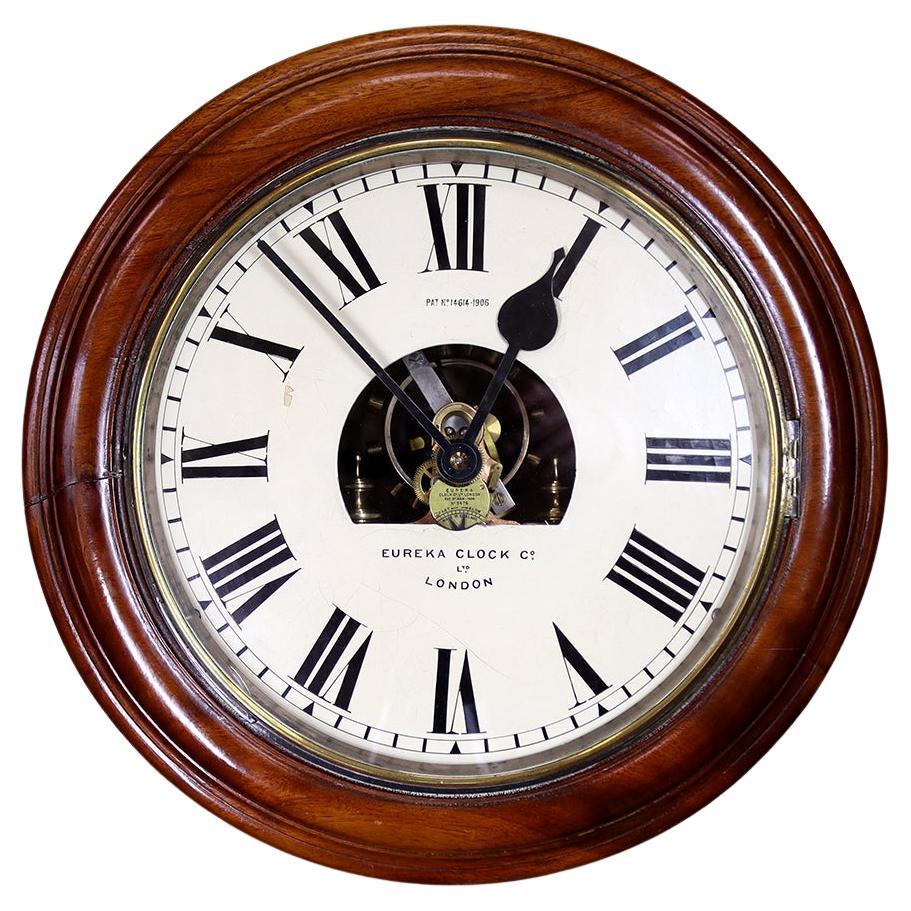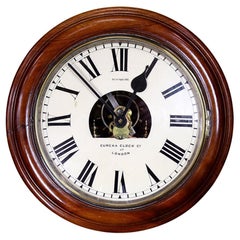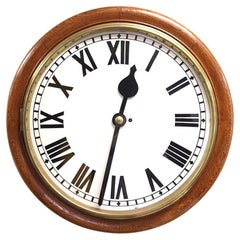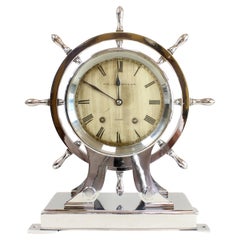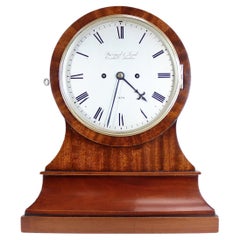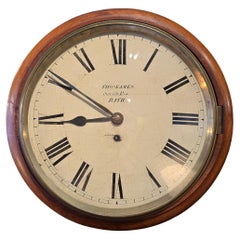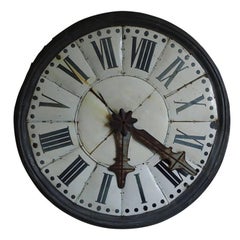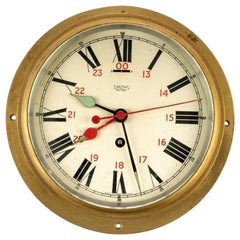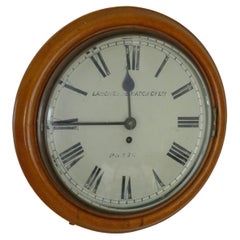Items Similar to A Twin Fusee Ships Striking Bulkhead Clock
Video Loading
Want more images or videos?
Request additional images or videos from the seller
1 of 14
A Twin Fusee Ships Striking Bulkhead Clock
$16,571.50
£12,360
€14,234.36
CA$23,247.33
A$25,367.07
CHF 13,124.11
MX$303,466.43
NOK 165,789
SEK 155,673.27
DKK 106,305.33
About the Item
A fine ship’s bell bulkhead clock striking the ‘Dog Watches’ Sequence. This eight day twin fusee clock is a rare example of a ships striking clock marking the watches on board a ship.
The high quality movement regulated by a large gilded platform lever escapement, thick brass plates with their original lacquer and water of air finishing, held by four turned pillars striking on a large polished bell of rich tone (see videos). The silvered roman dial with subsidiary seconds is signed Beaver, Manchester, and has large blued steel spade hands. Housed in a bronze case the bezel of contrasting polished brass is glazed in thick bevelled glass.
Louis Beaver of Manchester was recorded as working between 1840 and 1878, we believe this clock was made circa 1850.
Before the introduction of mechanical timekeepers, time onboard ship was measured using a '30 minute' sand glass. Starting at the beginning of each watch it was the duty of the helmsman or quartermaster to reverse this glass every thirty minutes immediately the sand had run through the top-half to the bottom-half, and on each occasion he did this he would strike on the ship's bell the number of times he had turned the glass, giving double strokes for whole hours followed by a single stroke for the last half. To ensure the watch keepers shared equal duties throughout the night, the ‘dog watch’ was introduced to run two compressed watches of two hours duration each between 4.00pm and 8.00pm which progressed the sequence, after which the regular watch pattern resumed. 'Ship's Bell' clocks which only repeat the striking sequence for every four hour period starting from midnight are not uncommon, but it is particularly rare to have a clock which takes care of the 'Dog Watch' sequence.
A similar clock by Benzie of Cowes is held by the Royal Collections Trust and is now in the summerhouse in the grounds of Buckingham Palace, having previously be used on one of the Royal Yachts.
- Dimensions:Height: 11.03 in (28 cm)Width: 11.03 in (28 cm)Depth: 6.3 in (16 cm)
- Style:Industrial (In the Style Of)
- Materials and Techniques:
- Place of Origin:
- Period:
- Date of Manufacture:1850
- Condition:Wear consistent with age and use. the clock has been serviced and the case cleaned. The clock is ready to ship and comes with a 2 year guarantee.12300.
- Seller Location:Amersham, GB
- Reference Number:Seller: 3521stDibs: LU9135243521902
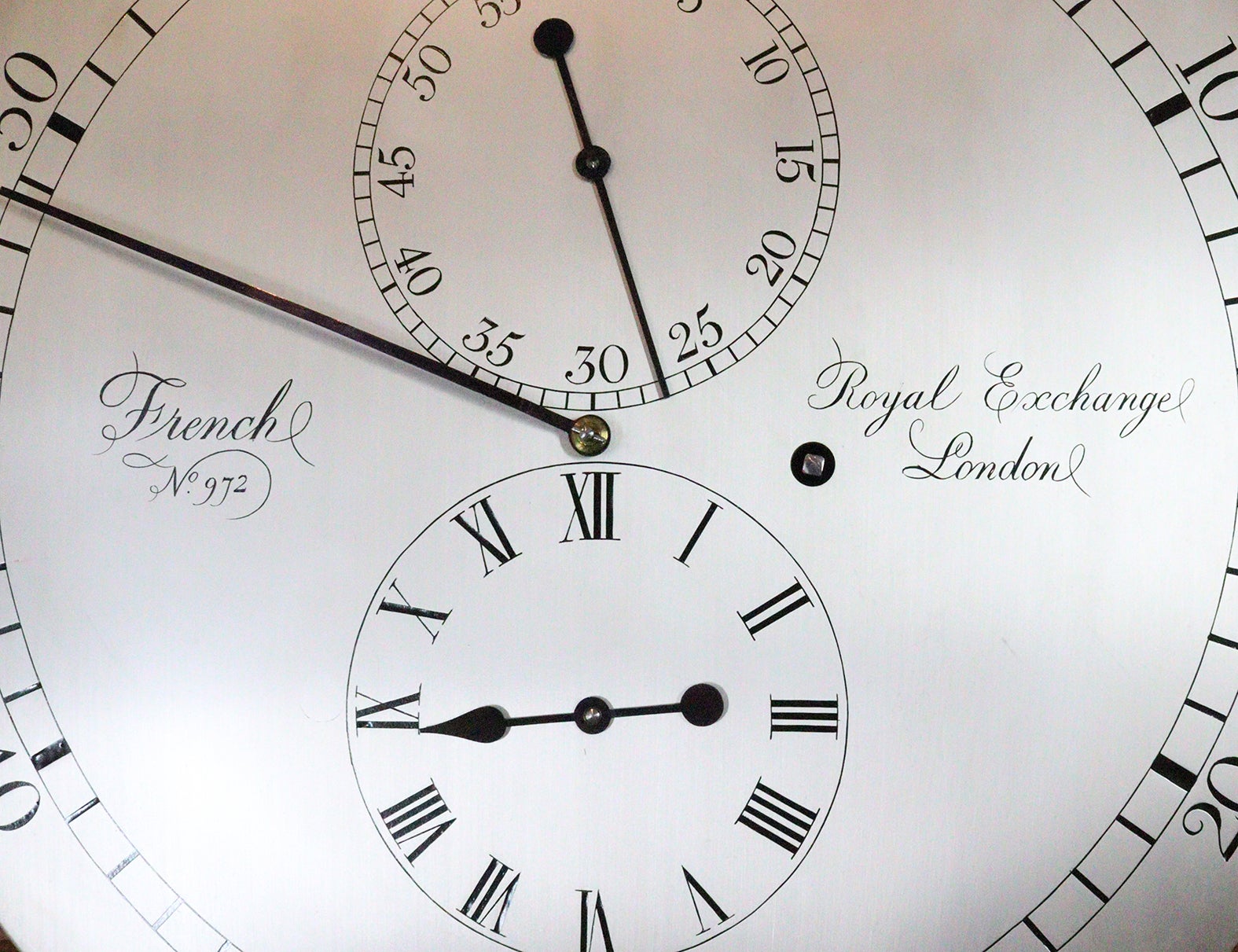
About the Seller
No Reviews Yet
Vetted Professional Seller
Every seller passes strict standards for authenticity and reliability
Established in 2021
1stDibs seller since 2023
7 sales on 1stDibs
Typical response time: 1 hour
- ShippingRetrieving quote...Shipping from: Amersham, United Kingdom
- Return Policy
More From This Seller
View AllEureka Clock Company, London. Dial Clock
Located in Amersham, GB
A superb example of a Eureka wall clock made c1911.
The electromagnetic movement is regulated by a large, slowly oscillating bi-metallic balance wheel, with the correct battery these clock will run for the duration of the battery life. Housed in a mahogany dial clock case with turned dial frame and brass bezel, the movement is visible through a cut out in the dial so the oscillation can be seen. The movement is numbered 5676 and stamped with the patent no 14614/1906 Made in England. The dial retains its original painted finish (cracked in places).
This is the only model of wall clock Eureka made and is one of the rarer designs as they mostly concentrated on mantel clocks.
The Eureka clock...
Category
Vintage 1910s English Edwardian Wall Clocks
Materials
Brass, Copper, Steel
Goliath Single Fusee Dial Clock or Station Clock
Located in Amersham, GB
This giant single fusee dial clock would have been made for a public space like a railway station. Made By Swinden and Sons of Birmingham, it has a su...
Category
Antique 1880s English Late Victorian Wall Clocks
Materials
Brass, Steel
Ships Clock By Gay Vicarino, retailled by Pascall Atkey of Cowes.
Located in Amersham, GB
An exceptional Ships Clock set in a ships wheel in a heavy cast brass chromed case, striking the hours and the half hours. This eight day movement striking on a coiled blued steel go...
Category
Antique 1880s French Industrial Mantel Clocks
Materials
Brass, Steel, Chrome
Twin Fusee Bracket Clock By Barraud And Lund
Located in Amersham, GB
A striking drum head bracket clock by Barraud and Lund of exceptional quality. The case is made of quarter sawn mahogany with a beautifully crisp silv...
Category
Antique Mid-19th Century English Victorian Mantel Clocks
Materials
Brass
Industrial Series Nautical Desk Clock
Located in Amersham, GB
This stylish desk clock made in the last quarter of the 19th century has a french eight day movement with a lever platform escapement. the movement is housed in a drum forming the ce...
Category
Antique Late 19th Century French Industrial Table Clocks and Desk Clocks
Materials
Griotte Marble, Brass, Enamel, Nickel, Ormolu
Nautical Desk Timepiece from the Guilmet Industrial Series.
By Andre Romain Guilmet
Located in Amersham, GB
A Nautical timepiece with a French eight day movement regulated by a large high quality English lever platform escapement, behind a silvered roman dial with blued steel spade hands u...
Category
Antique 1890s French Industrial Table Clocks and Desk Clocks
Materials
Belgian Black Marble, Gold Plate, Brass, Nickel
You May Also Like
English Wall Clock
Located in Kingsbridge, GB
English Wall Clock from the 1800s. The clock is in good working order and unrestored original condition. This English wall clock has a fussee movement, which led to far better time...
Category
Antique 1840s English Early Victorian Wall Clocks
Materials
Mahogany
$1,472
Large Industrial Antique French Clock Face
Located in Bridgeport, CT
Epic industrial wall clock face with zinc trim and surround, enamel face with Roman numerals. Non-working, architectural element for unique decor. Age appropriate condition including...
Category
Antique 19th Century French Industrial Wall Clocks
Materials
Enamel
$3,995 Sale Price
69% Off
Early 20th Century Smiths Astral 'Great Britain' Shipboard Clock, circa 1930s
Located in Bridgeport, CT
Early 20th century Smiths Astral [Great Britain] shipboard brass clock, circa 1930. A brass case with inset beveled glass panel that reveals a silvertone...
Category
Vintage 1930s English Industrial Nautical Objects
Materials
Brass
Wall clock by Lancashire Watch Co., late 19th cent. Ships free within USA.
Located in Madison, WI
Wall clock, late 19th century, by Lancashire Watch Co. from British railway station. As the name denotes, Lancashire was primarily a watch company. Opening in 1893 in one of England’...
Category
Antique Late 19th Century English Victorian Wall Clocks
Materials
Brass
$1,478 Sale Price
70% Off
Rare Early Large Cast Iron Exposed Dial Railway Clock by Synchronome Electric
By Synchronome
Located in Nottingham, GB
Early 20th-Century Cast Iron Railway Clock by Synchronome – 24-Inch Dial
A rare and commanding example of industrial timekeeping by Synchronome Electric, this large cast iron railwa...
Category
Vintage 1920s British Industrial Wall Clocks
Materials
Brass, Enamel, Steel, Iron
MFD by Self Winding Industrial Clock
By Self Winding Clock Co.
Located in Mexico City, CDMX
Circa 1940, we offer this MFD by Self Winding Industrial.
Category
Vintage 1940s American Industrial Wall Clocks
Materials
Steel
